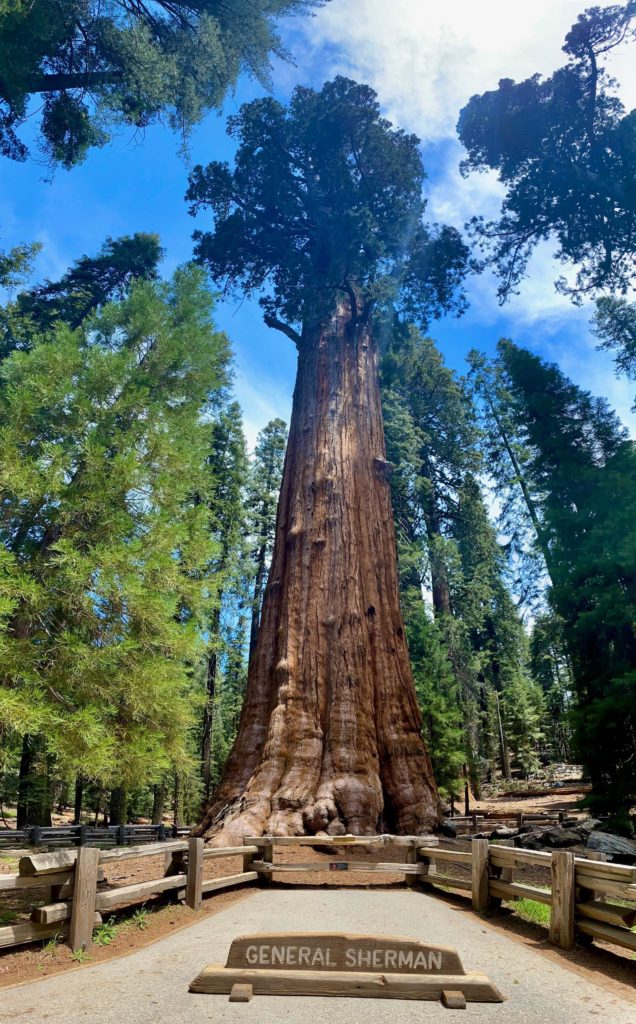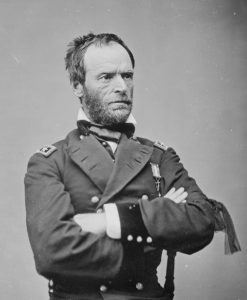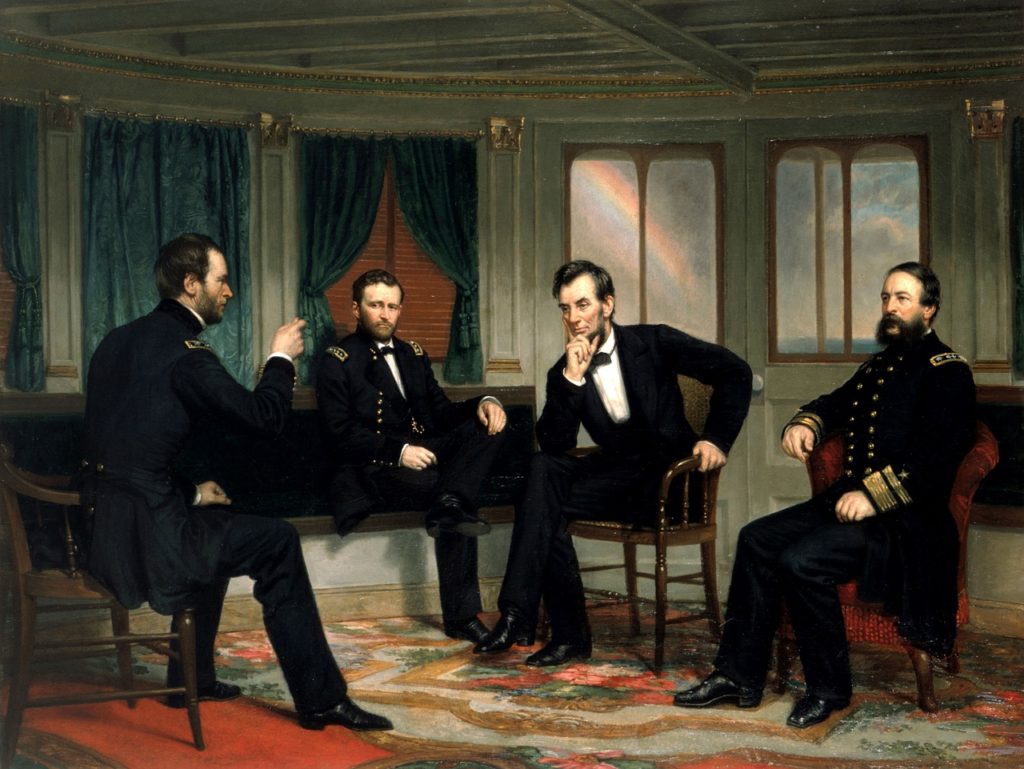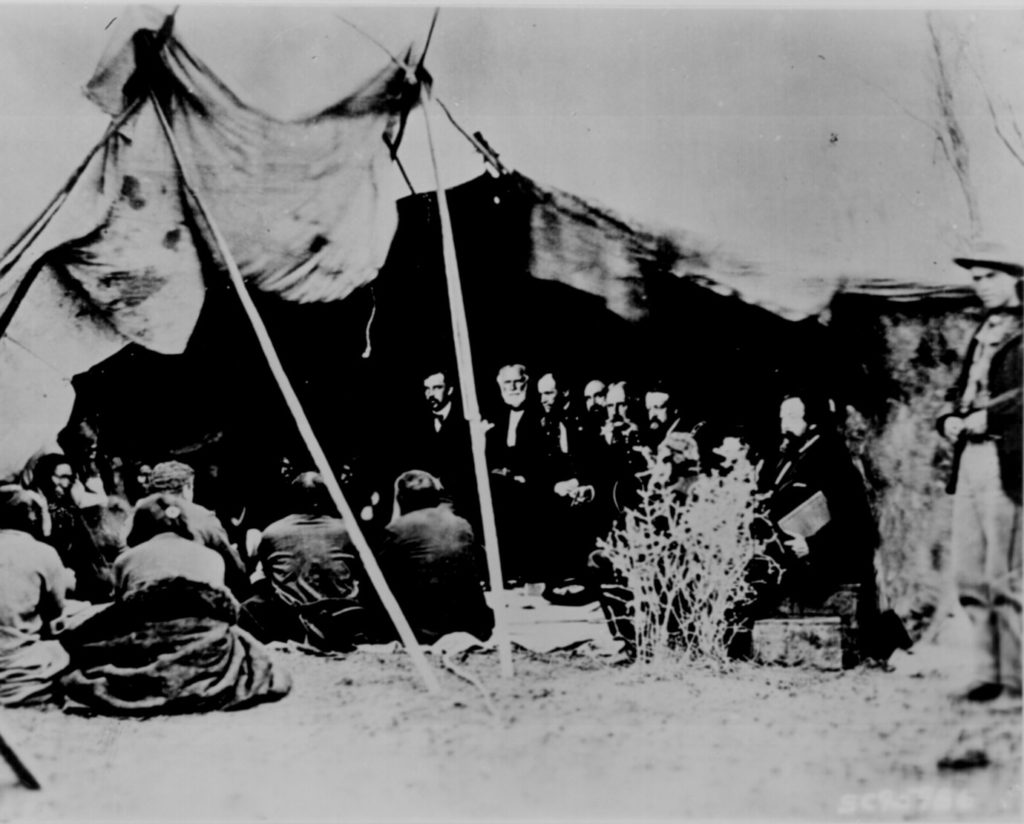
…to possess the whole of the continent which Providence has given us. —Manifest Destiny
By Sarah Elliott, 1 July 2020, 3RNews
What’s in a name?
Let’s meet the man after which the largest, and arguably most visited and revered, tree in the world is named. However, here we are in the 21st century, and no one can say for certain how, why, or when the General Sherman Tree was named.
In the Sequoia National Park historical archives, it is written that the General Sherman Tree was named “August 7, 1879, by James Wolverton, pioneer cattleman and trapper, in honor of General Sherman, under whom he served as First Lieutenant in the 9th Indiana Cavalry.” But historians have discovered that there is no evidence documenting that any of this statement is true.
“As we will see, there are a few issues with this narrative. Foremost among them is that James Wolverton, as such, never existed…” wrote Laile Di Silvestro in a 2019 series for 3R News entitled J. Wolverton and the Ghastly End. “There are no census, voting, or property records for a James Wolverton in Tulare County between 1874 and 1893.”
“What we know for certain is that the earliest historic reference to the name is from 1897, when the acting superintendent reported his plan to get a new sign for the tree.”
During the period of 1886 to 1892, the tree was dubbed the Karl Marx Tree by the members of the Kaweah Colony. It’s likely this was the first time the tree was given a name by the early white settlers.

The Sherman legacy
General William Tecumseh Sherman (February 8, 1820-February 14, 1891) did as much as any man to ensure Euro-Americans achieved their manifest destiny. The ideology that became known as Manifest Destiny, coined by newspaper editor John O’Sullivan in 1845, was a belief in the inherent superiority of white Americans, as well as the conviction that they were destined by God to conquer the territories of North America, from sea to shining sea.
Once white settlers were bestowed with the privilege of Manifest Destiny, the indigenous peoples were a mere impediment to progress. And the doctrine inflamed tensions over slavery, ultimately leading to the Civil War.
In California
Originally from Ohio, William Sherman began his military career as a young soldier in California, where he would spend three years, from 1847 to 1850. While he was here, there was the Mexican-American War (he didn’t see action), the Gold Rush, and California was granted statehood. According to biographer James Lee McDonough, “Sherman threw himself into the civic life of the state. He met almost everyone of note, visited missions, unsuccessfully hunted grizzly bears, patronized the local arts, opened a store in Coloma (to supplement his meager Army wages), and spent as much time with the state’s women as possible.”
And Sherman even explored the mountain range where there is now a beautiful giant sequoia named in his honor, although it’s doubtful he ventured this far south in the range. He helped assemble a surveying party to study the Sierra Nevada and find a railroad route through the high mountains.
Civil War
During the U.S. Civil War, General William Tecumseh Sherman was one of the major architects of Confederate defeat and the final overthrow of American slavery. Yet in his personal attitudes, he was, by his own account, a racist and white supremacist.
Sherman’s attitude toward black people was one of contempt. He was quite comfortable with referring to them in derogatory terms. But he also told Southern slaveholders that they needed to treat their slaves “more near the status of human beings.” Sherman had no issue with keeping black people enslaved, he just thought they should be treated humanely.

After the Emancipation Proclamation, many former slaves sought to join the Union army. Sherman ordered that any recruiter who enlisted black soldiers would be arrested and possibly imprisoned. President Abraham Lincoln reminded Sherman that there was a law in effect regarding black recruitment into the Union Army, and that because it was a law, all must follow it. Sherman refused to change his mind.
For the Great Warrior Sherman, it was easier to unmake laws than it was for the courts of the land to interpret them. (Dee Brown, Bury My Heart at Wounded Knee)
March to the Sea
The Civil War military campaign known as Sherman’s March to the Sea occurred from November 15 until December 21, 1864. It began after the burning of Atlanta with forces traveling from there to the port of Savannah on the Atlantic coast. Everything in the Union troops’ path was destroyed — Sherman’s own controversial “scorched-earth” policy — which left nothing but ruin behind.
An unintended consequence of Sherman’s scorched-earth campaign was that all manner of freed slaves —men, women, children, and the elderly — abandoned the now-demolished plantations and fell in behind him. More than 10,000 black refugees followed Sherman’s March to the Sea. And the Confederate cavalry was closing in from the rear.
A defining moment was when a pontoon bridge had to be quickly erected to cross Ebenezer Creek. Telling the refugees that the troops needed to cross the swollen creek first because of fighting in the front, the soldiers crossed and quickly dismantled the bridge, cutting off the refugees’ only route to freedom.
The Confederates arrived at water’s edge, causing hundreds of stranded liberated slaves to jump into the icy water in an attempt to cross. Many drowned. Those who didn’t were shot on sight or captured and re-enslaved. Any Union troops attempting to help the victims were ordered to continue the march. It was a barbaric slaughter of thousands and thousands of newly freed slaves.
To avoid reprimand, Sherman had to make amends for the Ebenezer Creek massacre. Secretary of War Edwin McMasters Stanton requested that Sherman convene a group of black leaders. Of the 20 men summoned, all were church leaders and 16 were former slaves.
The question was asked: What should the government do for black people?
The answer was land; give them land to work and live on with an opportunity to purchase it.
Four days after the meeting, Sherman issued Field Order No. 15: the “40 acres and a mule” rule, which set aside islands along the Georgia, Florida, and Carolina coasts — nearly 400,000 acres — for black resettlement. Within months, more than 40,000 black Americans had flocked to the Sea Islands area, dubbed “Sherman Land.”
The future looked bright until… soon after the inception of Sherman Land, President Lincoln was assassinated. His successor, Andrew Johnson, a Southern sympathizer, overturned Field Order No. 15 in the fall of 1865.
By the end of the Civil War, Sherman recognized that the South had severely mistreated its black population. But he never denounced the institution or morality of slavery.
American Indian Wars
All we ask is to be allowed to live, and to live in peace. I seek no war with anyone. (Cheyenne chief)
Sherman, now the most senior member of the U.S. Army, was the man for the job of eradicating the natives. The same tactic was used as with the slaves: the government made promises that it did not keep. By 1880, most of the tribes, along with the buffalo that fed and clothed them, were eliminated.
Great Warrior Sherman, as the natives called him, was to secure land for the transcontinental railroad and mining interests in territory inhabited by the indigenous peoples. The plan was to move them onto reservations, where they would no longer be free to move about the country. They were instead confined while the the white man was able to freely settle, explore, build, mine, hunt, and exploit.
The end of the Civil War did not, however, mark the end of General Sherman’s military career. Off he went to cleanse the frontier of the indigenous people who lived on ancestral lands that were now being exploited by white settlers to be dug up, dammed up, and deforested in search a grand fortunes.
Whether on the ground leading troops or from behind a desk in Washington, D.C., Sherman ordered many trials and punishments for native captives. At times, the indigenous peoples were treated as prisoners of war even though the war had been unilaterally initiated by the United States.;
The whites told only one side. Told it to please themselves. Told much that is not true. Only his own best deeds, only the worst deeds of the Indians, has the white man told. (Yellow Wolf of the Nez Perce)

Sherman was also responsible for the near extinction of the American bison. He knew that the way to subdue the indigenous tribes was to annihilate the buffalo of the Great Plains. Since buffalo were a critical part of the natives’ existence, both physically and spiritually, Sherman went straight for the herds. What’s in a name
“I think it would be wise to invite all the sportsmen of England and America… this fall for a Grand Buffalo hunt and make one grand sweep of them all,” Sherman wrote.
The U.S. Army offered protection for the hunters while allowing them to kill hundreds of thousands of the animals. While buffalo lay dead and rotting on the plains, Sherman continued to promote the killing of the once vast herds to vanquish the native people. (By the early 20th century, only 325 buffalo were left in America.)
By Sherman’s retirement in 1884, he had succeeded in forcing all the Plains Indians who had survived the many conflicts onto regional reservations.
My opinion is, if fifty Indians are allowed to remain between the Arkansas and the Platte we will have to guard every stage station, every train, and all railroad working parties. In other words, fifty hostile Indians will checkmate three thousand soldiers. Rather get them out as soon as possible, and it makes little difference whether they be coaxed out by Indian commissioners or killed. (General William T. Sherman)
Ironically, Sherman’s middle name, Tecumseh, is after a Shawnee chief and warrior whom his father admired. And while Sherman was most definitely a warrior, the second act in his military career was dedicated to decimating the indigenous culture and life of his namesake.
American hegemony was victorious over the tribal resistance. And this is the “hero” who was foremost in the forced, violent, and deadly removal of the indigenous people off the lands where they and their ancestors were born and for whom the General Sherman Tree is named.
What would Sherman think of having the world’s grandest natural monument named after him? Perhaps he would feel subjugated because that monument is located within the boundaries of a national park that is named in honor of a descendant of the country’s indigenous inhabitants.
To the Kiowas and Comanches the white men seemed to hate everything in nature. (Dee Brown, Bury My Heart at Wounded Knee)
Much appreciation to Laile Di Silvestro of Three Rivers, historical archaeologist and researcher extraordinaire, for providing information for this article and answering a lot of questions. Additional sources include Memoirs of William T. Sherman (1875), The 1619 Project (The New York Times Magazine, 2019), and Bury My Heart at Wounded Knee: An Indian History of the American West (Dee Brown, 1970).
